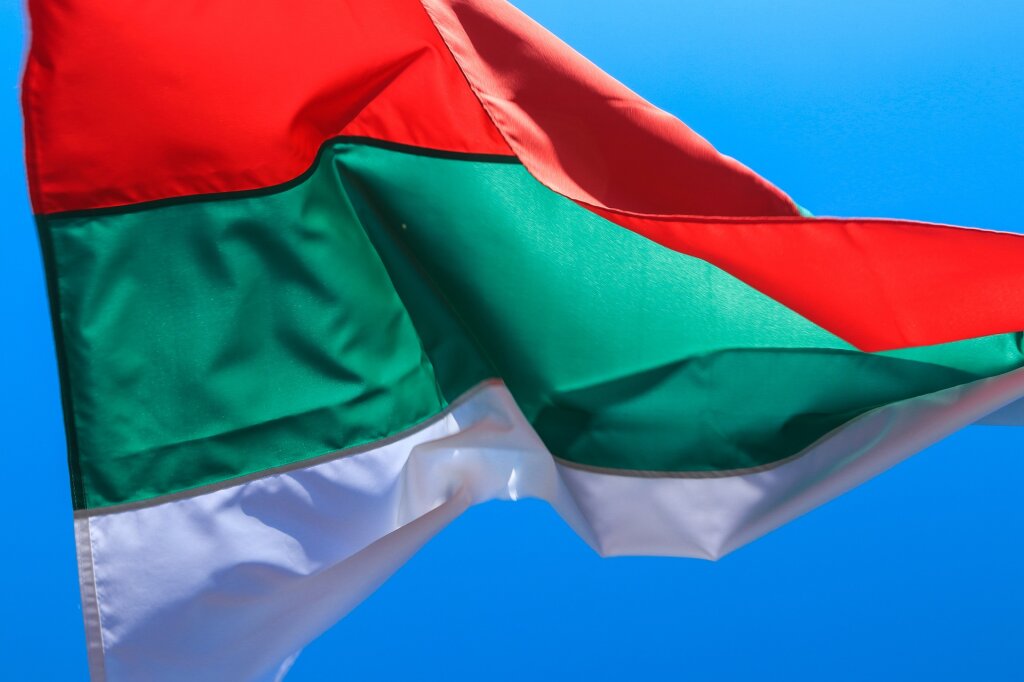Leora Eisenberg is a PhD candidate in the Department of History at Harvard University, specializing in Central Asian Soviet history.
This post is based on her article “‘I became an Uzbek’: Jewish-Uzbek encounters in World War Two evacuation,” which appeared in Central Asian Survey in 2023.
Leonid Averbuch, a Jewish boy from Odesa, was ten when the Second World War broke out in the USSR. His family used to rent a dacha by the sea in the summers and visit the cinema on the weekends. But in June 1941, things changed abruptly: Averbuch’s father was conscripted, while he and his mother were evacuated to Tashkent, the capital of the Uzbek SSR, which had swollen with evacuees from the eastern front. At the local school, Averbuch studied alongside Leonid Yusupov, son of Usmon Yusupov, First Secretary of the Communist Party of Uzbekistan.
In fact, Averbuch owed the elder Yusupov a debt of gratitude: it is the First Secretary—the consummate representative of the Uzbek people—who wrote him a recommendation for acceptance to the Komsomol, the Communist Youth League. Not all of Averbuch’s experiences with the local Uzbek population were so positive, however. He claimed, for example, that he encountered open antisemitism for the first time in evacuation. “Uzbeks knew the word yakhuda … [A]t the market when a Jewish customer tried to haggle with them, they said Jebrei [mispronunciation of ‘Jew’], go away and come back tomorrow,’” he says. “Once a group of local boys brutally beat me up, kicking me … and calling me zhydovskaya morda [Jewish mug].” Within his three years in evacuation to Tashkent, then, Averbuch experienced two opposed interactions with Uzbeks, an ethnic group he was likely encountering for the first time: antisemitic harassment on one hand and friendship on the other.
Averbuch’s experience encapsulates the tensions of evacuation as a locale for interethnic contact during the Second World War. Although the Soviet state had been promulgating the ideology of “friendship of the peoples” since the mid-1930s, the rhetoric of “friendship” became especially important during the war, when soldiers and civilians of various ethnicities were expected to come together to support both the war and home fronts—especially as millions of them were evacuated to Central Asia.
Sometimes, “friendship of the peoples” accurately reflected reality. This principle held true both among the evacuees representing the state’s cultural intelligentsia, who were also highly visible to the state and thus obligated to faithfully observe its ideology, and “regular” evacuees, who might learn the Uzbek language, adopt Uzbek customs, or explicitly contribute to the development of Uzbek music, literature, and theater. At other times, however, the idea of interethnic “friendship” remained purely aspirational, as Averbuch’s example demonstrates. In the paper from which this post derives, I examined the testimonies of over 120 Jewish evacuees to Uzbekistan to learn about their perceptions of this period—and whether it could be framed as a success of the “friendship of the peoples.”
One of my findings was that evacuees, especially “regular” ones, learned the Uzbek language. For instance, wounded soldier Henrikh Dudnik was discharged to the Tashkent suburb of Yangiyul. Despite there being no heating in their traditional Uzbek mud hut—which had to accommodate not only four people, but also a goat—and very little food, Dudnik’s perception of Uzbeks and the Uzbek language remained quite positive. “My wife learned Uzbek and I picked up a little, too,” he says. When asked if he lived in Tashkent following his discharge, he goes so far as to say that “yes, [he] became an Uzbek.” He was hardly alone: many of my respondents, especially those who were children at the time of evacuation, learned Uzbek, usually because they had to integrate into local society, whether for school or for work.
One woman, Esther Tenner, worked as a teacher in a local Uzbek school, where her linguistic proficiency afforded her great affection and respect from teachers and students alike. An eyewitness recalls that “she began getting invitations to family gatherings and was welcomed by local officials at Sel’soviet [sic], village council meetings.” This proximity to Uzbeks and, in many cases, an ability to communicate with them in their mother tongue gave evacuees an opportunity to learn about Uzbek culture. Some recall learning to eat “like Uzbeks” (i.e., sitting on the ground), acquiring traditional skills (e.g., growing melons or making hats), and dressing like Uzbeks (“a chadra, the traditional Islamic dress for women … forty-two braids, the whole thing”).
Perhaps the most famous example of such wartime Jewish-Uzbek cooperation is the Moscow State Jewish Theater (GOSET), whose director, Solomon Mikhoels, was so heavily involved in Uzbek cultural life that he was considered the “head of all the Tashkent theaters.” He collaborated with the famed Uzbek poet Oibek on the Uzbek opera Tarabi and worked with the renowned Uzbek playwright Mannon Uyg’ur on the play Mukanna. Mikhoels is reported to have learned Uzbek, which surely helped him and his theater put on Hamza, an Uzbek play translated into Yiddish, “reflecting the battle and everyday life of the Uzbek people, its people, its heroes.”
Yet all was not always well on the home front. While evacuation bred resentment for all kinds of evacuees among the local population, Ashkenazi Jews were singled out for particularly negative treatment. Many incidents were committed by Slavs, but some were committed by Uzbeks. Rachel Rivkina claims that local Uzbeks “treated Jews unkindly. [They] repeated every minute, ‘Tashkent is mine. I am the master.’ Before the arrival of the evacuees, the Uzbeks, in general, didn’t know who Jews were. But in Tashkent there were a lot of Russians, [sic] who had been exiled there before the war. It was from the Russians that they learned to offend Jews. They called us jillya, meaning zhid [kike] … in the Uzbek language.” Similarly, Minna Birman notes how her Uzbek coworkers resented Jews: “I heard some Uzbek talking about zhydy [a word that may have itself arrived in Uzbekistan with European evacuees—LE] … behind my back on a bus … They were about to beat me.”
These Uzbeks’ harassment of Jews took on a traditionally Slavic character when they used or Uzbekified Russian words like zhid—which, in Birman’s testimony, is paired with the perception that the Uzbeks were “about to beat her,” as though following through on the well-known East European rallying cry of “beat the kikes” (sometimes paired with “save Russia, a slogan sometimes attributed to Nestor Makhno). In a perversion of the “friendship of the peoples,” first contact with nationalities from across the Soviet Union could, in some cases, lead to ethnic discrimination—often with locals adopting language and behaviors from European evacuees or soldiers.
Intelligentsia writers, Uzbek and Jewish alike, acknowledged antisemitism in official publications. For example, in June 1941 the renowned Uzbek poet G’ofur G’ulom wrote a poem called “I Am a Jew,” a searing indictment of Nazi policy. Even if G’ulom’s poem predates the influx of evacuees later that year, such impassioned defenses of Soviet Jews suggest knowledge of on-the-ground antisemitic attacks, as well as sympathy for their situation. That one of the founders of modern Soviet Uzbek literature publicly defended Jews and even considered himself a Jew—the ultimate acquisition of national knowledge, not unlike Dudnik’s “becoming an Uzbek”—was not lost on Jewish evacuees themselves. Vladimir Zhirmunskii, an evacuee literary scholar (who also learned Uzbek), considered G’ulom’s act “a wonderful poetic declaration of the Stalinist friendship of the peoples.”
About half of my respondents, meanwhile, reported experiencing no antisemitic discrimination in Uzbekistan. Sophia Abidor, for instance, attended Tashkent Medical University from 1942–43, where “most of the students were Uzbek... I didn’t face any anti-Semitism during my evacuation.” Malea Veselnitskaya notes something similar: “The local population in Tashkent was friendly. We got along well with Uzbeks, Tajiks, Russians and Ukrainians.” While this sentiment is hard to square with reports of widespread antisemitism, it could suggest the local population’s willingness to positively engage with the cultures of other nationalities, beyond or perhaps outside the ideological framework of “friendship of the peoples.”
Moreover, given the focus on narratives of rising antisemitism in the work of many Jewish oral history organizations, the absence of such themes in evacuees’ testimonies suggests that antisemitism was not rampant in evacuation—even if “friendship of the peoples” as such was not, either. However fraught with potential social complications, evacuation seems to have encouraged interethnic friendship and cultural exchange.



